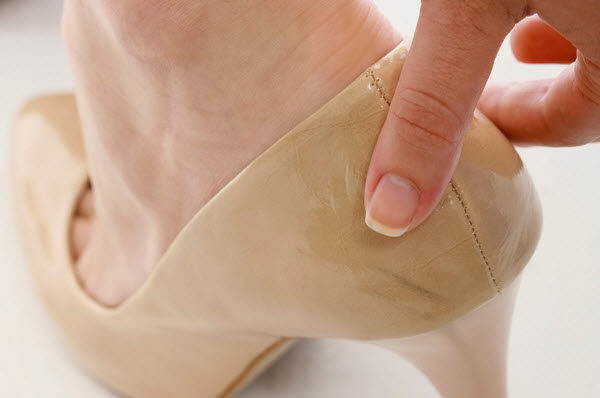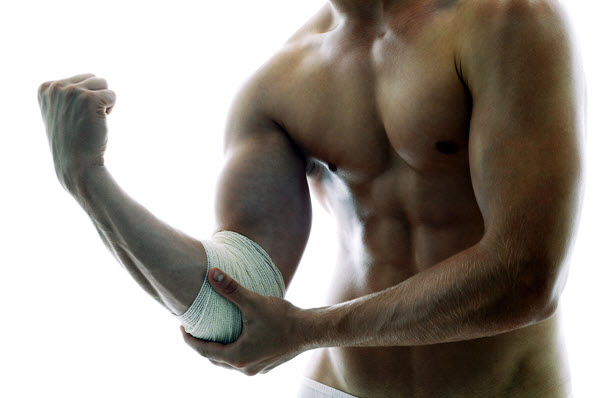Words of Advice To Keep Your Joints Healthy
By DWAYNE AUSTIN
October 18, 2017 • Fact checked by Dumb Little Man

As a woman, it is only natural that your health is one of the most important parts of your life. Once you pass a certain age, you might have to deal with specific problems, such as arthritis. Left untreated, this condition can cause serious damage to your health and lifestyle. The inflammatory process will lead to symptoms such as reduced range of motion, joint pain, and stiffness.
For this, it is for the best to educate yourself about the condition. So, keep on reading and find out how you can keep your joints healthy.
What is a joint pain?
Joint pain is the type of pain that appears at the level of a joint. This is commonly a symptom of an underlying condition, such as arthritis. However, it can also appear as a result of an injury.
The important thing here is to differentiate acute joint pain from chronic pain. This is important since it will guide you in choosing which treatment to take.
Here are some of the most common symptoms you can experience with joint pain:
- Reduced range of motion
- Stiffness
- Swelling and redness
- Sensation of warmth
- Tenderness or pain
Types of joint pain
These are different types of joint pain:
- Arthritis joint pain – It can impair the quality of life as it restricts movement. In advanced cases, the patient presents severe inflammation and pain at the level of the affected joints.
- Osteoarthritis joint pain – The pain commonly happens at the level of the hip or knee joint(s). It’s often accompanied by loss of function in the respective joint.
- Gout joint pain – The accumulation of uric acid leads to pain, inflammation, and redness in the affected joint. It commonly affects the joints of the big toe.
- Rheumatoid arthritis pain – This pain frequently affects the joints of the hands and feet. It usually leads to pain, swelling, and loss of function.
- Post-traumatic arthritis pain – This appears as a result of an injury or fracture. It’s typically accompanied by inflammation, redness, and movement restriction in the respective joint.
- Other types of joint pain – This includes migratory arthritis pain, bursitis pain, neuropathic arthropathy pain (Charcot disease), temporomandibular joint disorder pain, etc.
Causes of joint pain
These are some of the most common causes of joint pain:
- Wear and tear associated with the physiological aging process
- Infection at the level of the respective joint(s)
- Injuries or fractures
- Inadequate functioning of the immune system (autoimmune disorder – rheumatoid arthritis)
- Lack of adequate lubrication at the level of the joint cartilage, bone & cartilage destruction
- Loss of cartilage
- Accumulation of uric acid at the level of the joint (gout)
- Nerve ending(s) irritation
- Intense physical effort & repeated trauma (contact sports)
How can you manage joint pain?
The first and most important thing is that you obtain a correct diagnosis for your joint pain. Get your symptoms checked by a doctor, so you can get the right treatment.
These are some of the typical ways to manage pain in the joints:
Oral medications
NSAIDs
Recommended choices include aspirin, ibuprofen, and naproxen. These oral medications can cause liver damage, so you should only take them as prescribed.
Acetaminophen is a good alternative to those medications mentioned above. It’s good for less severe cases and has a lower risk of damaging the liver.
Opioids
This works best for severe cases, such as those with loss of function and intense pain. Take note that opioids can cause drowsiness.
Muscle relaxants
Muscle relaxants are the best choice for those who present muscle spasms and reduced range of motion.
Antidepressants
These are often prescribed for pain management and also to reduce the risk of depression.
Topical treatments
Capsaicin ointment
It can block the pain signals, giving it powerful analgesic and anti-inflammatory properties. It may cause a burning or stinging sensation on the area of application.
Injections
Corticosteroid injections
These are best recommended for patients who suffer from more severe forms of arthritis. These are performed every couple of months and they provide temporary relief.
Hyaluronan injections
These are meant to replace the natural fluid of the affected joints.
Arthroscopic fluid removal
This procedure involves the removal of the excess fluid that accumulated in the affected joints. It can be performed at the same time with the corticosteroid injection.
Physical therapy
A physical therapy program can improve the range of motion of the affected joints, reducing both the intensity and frequency of the symptoms experienced. It can be used to strengthen the muscles surrounding the affected joints and also to relieve the pressure on the affected parts. It may be used in combination with heat/cold therapy, ultrasound therapy, manual therapy or swimming.
Home care measures
- Brace/wraps for the affected joints, joint compression, and elevation are some of the ways you can manage joint pain at home. Resting the affected part can greatly help, too.
- Avoid long periods of sitting and standing as these can cause quite a lot of damage to the joints.
- Say goodbye to your sedentary lifestyle and engage in physical exercise on a regular basis. If you are not certain about the kind of physical exercise that is good for the joints, pay a visit to a physical therapist.
- Avoid inflammatory foods, like refined/excessively processed foods, sugary drinks, sweets, fast food, and junk food. Opt for a diet that is mostly based on fresh fruits and vegetables, lean meat, and other healthy choices.
- If you play contact sports, reduce the risk of joint injuries by wearing the proper equipment. You should also get adequate training, like practicing safe playing and avoiding being too aggressive.
- Avoid eating too much red meat. This will cause uric acid to accumulate at the level of the joints, increasing the risk for gout and other inflammatory conditions.
- Give up smoking and alcohol. These are two of the main factors which can accelerate the aging process of the joints, leaving them vulnerable to damage and inflammation.
- Treat all infections. Untreated infections can cause harmful microorganism to travel to various joints, causing a wide range of symptoms.
Final word
Just because you are aging, this does not mean you cannot keep your joints healthy and functioning. Learn how to recognize the symptoms of inflammatory condition early on and do not hesitate to seek out the best forms of treatment. Pay attention to the prevention methods as well since these can help you enjoy healthy joints for as long as it is possible.
DWAYNE AUSTIN
Dwayne Austin is a multi-faceted author, blogger & fitness instructor. His articles on Health & Fitness have been published on various sites. Through his meticulous & informative blogging, Dwayne hopes to contribute to curious readers. He promotes ConsumerHealthDigest which encourages people to live a healthy lifestyle. He is passionate about photography and enjoys swimming during his leisure time.



